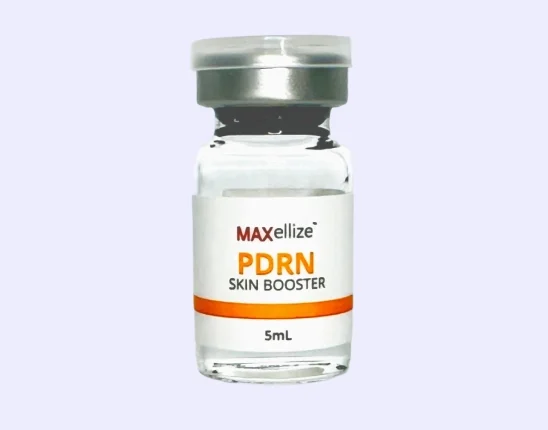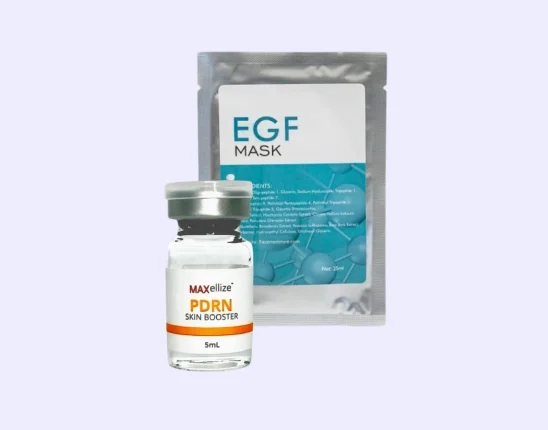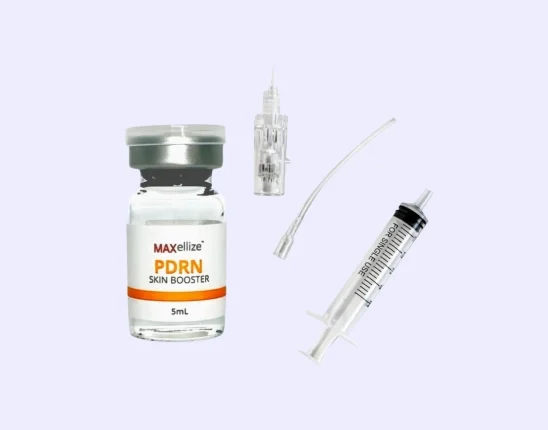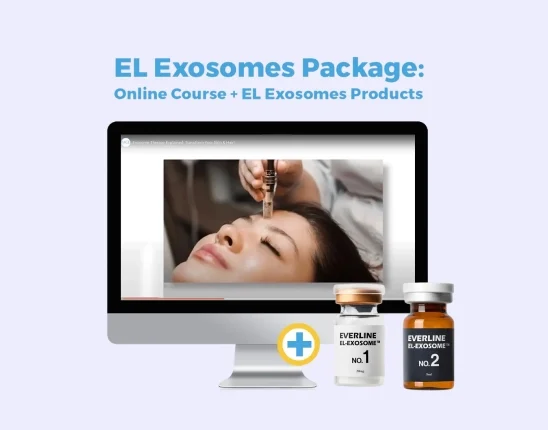Research is directed towards learning about the microscopic and molecular mechanisms of human disease. With this, different cell types and the products they secrete are being observed and experimented on. An example of these products that gain the interest of researchers is the transforming growth factor beta-1.
So what’s transforming growth factor beta-1? Transforming growth factor beta-1 (TGF beta-1) is the most abundant form of the 3 isoforms of the TGF family. It has an immune function and has a role in healing and fibrosis. Elevated levels of this growth factor also have negative effects on the human body.
Transforming Growth Factor Beta Isoforms
The transforming growth factor-beta (TGF-beta) family is under a superfamily of the same name, composed of a large group of proteins that govern many biological processes including cell proliferation and immune regulation in a wide range of cell types.
Growth factors in the TGF-beta family have 3 isoforms, which are similar in their highly conserved regions and receptor signaling pathways. They’re differentiated based on their abundance and the amino acid regions that they diverge from.
- Transforming Growth Factor Beta1 – TGF beta-1 is the most abundant and widely-expressed form. TGF beta-1 may be playing a role in the growth and differentiation of cartilage, bone, and skin because high TGF-β1 levels are seen in these tissues.
- Transforming Growth Factor Beta2 – TGF beta-2, also known as the glioblastoma-derived T cell suppressor factor (G-TsF), was discovered from human glioblastoma cells. It got its name due to this discovery and its ability to suppress the interleukin-2-dependent growth of T lymphocytes. In an embryo, it’s also found in the neurons and astroglial cells.
- Transforming Growth Factor Beta3 – TGF beta-3 is highly expressed in the umbilical cord and the tumor cells of the lung adenocarcinoma and kidney carcinoma. It has also been described in mice to play a role in the formation of the normal palate and lungs. It also has a role in epithelial-mesenchymal interaction.
What’s Transforming Growth Factor Beta-1?
As mentioned, transforming growth factor β1 (TGF-Beta 1) is the most abundant isoform of the 3 isoforms of the TGF-beta family. It’s a protein cytokine encoded by the human TGFB1, shown to have a 2.5 kb transcript. Like any other protein, it may be described according to structure, its synthesis and activation, expression, localization, and signaling.
1) Structure
A mature (or active) TGF-beta has nine cysteine residues which are consistently found in protein members of this family. Cysteine knot structure is made through the formation of disulfide bonds (bond between 2 sulfide residues) in the 8th cysteine residues of a single protein. A dimer is made through the formation of disulfide bonds between 2 TGF-beta proteins.
2) Synthesis And Activation
TGF-beta is secreted as a latent (inactive) protein with three parts namely the signal peptide, the latency-associated peptide chain (LAP), and the mature TGF-beta protein. LAP is needed to be exercised to facilitate the activation of TGF-beta and promote its functioning. Experimental studies show that this may be done via acidification in vitro (or outside the living organism).
In vivo (within the cells), on the other hand, it’s less clear, although some cell components are implicated as activators, such as thrombospondin 1 (TSP-1), found in platelets and the extracellular matrix, and αvβ6 integrin, and matrix metalloproteinases 2 and 9 (MMP-2 and MMP-9).
3) Expression
TGF-beta may be found ubiquitously throughout the human body. TGF-beta protein levels are detectable in many different cell types such as epithelial cells, endothelial cells, inflammatory cells, and even fetal human cortical cells.
4) Signaling
All 3 TGF-beta isoforms exhibit the same signaling process. They use the same receptor which has 3 components namely type I (RI, or ALK5), type II (RII), and type III (RIII, or betaglycan). Upon activation of TGF-beta, signal transduction occurs through Smad and non-Smad pathways.
This is where ALK5 phosphorylation of the components forms the Smad2-Smad3-Smad4 complex. This complex is then transported towards the nucleus, affecting gene expression by binding to DNA.
Functions Of TGF-Beta
Studies on the response to TGF-beta are being done to determine the biological roles of TGF-beta in the body. Functions of TGF-beta include its role in controlling gene expression, controlling cell proliferation, controlling cell differentiation and stemness, its role in immune regulation, and its role in healing and fibrosis.
1) Control Of Gene Expression
TGF-beta is capable of regulating genes that encode proteins such as SMAD7 gene that encodes the inhibitory Smad7, SERPINE1 that encodes plasminogen activator inhibitor 1, and CDKN1A which encodes the cyclin-dependent kinase inhibitor p21.
It’s also capable of regulating noncoding RNAs such as microRNAs and long noncoding RNAs, the biological significance of which is still being studied currently.
2) Control Of Cell Proliferation
Depending on the cell type and environmental condition, TGF-beta may induce or inhibit the growth and proliferation of cells. An anti-proliferative response is observed in cells such as epithelial cells and keratinocytes which occur through certain mechanisms.
Some of these mechanisms include induction of cyclin-dependent kinase inhibitors and elimination of proliferative drivers such as signaling pathways responsible for growth stimulation. On the other hand, inhibition may be dependent on the conditions that the cells are subjected to, affected by other growth factors such as the platelet-derived growth factor.
3) Control Of Cell Differentiation And Stemness
TGF-beta plays an essential role in the differentiation of mesenchymal and embryonic stem cells towards different cell types such as immune cells, blood cells, and neural/neuronal cells. As evidence to this, in fact, mice induced to be deficient with TGF-B1 has problems in the functioning of their immune system, those deficient with TGF-B2 have defects in the central nervous system, and those without TGF-B3 have impaired development of the lungs and palate.
4) Immune Regulation
TGF-beta has both pro-inflammatory and anti-inflammatory effects. It exerts its regulatory effects on inflammatory cells by acting as an inhibitor against immune activation. Specifically, it modulates Foxp3 expression, which regulates the development and function of T cells.
In the presence of IL-6, on the other hand, TGF-beta may also exert proliferative effects on Th17 cells and induce their differentiation. It may also prevent DC maturation and recruit inflammatory cells like macrophages and granulocytes to the site of inflammation as well.
5) Healing And Fibrosis
TGF-beta plays a role in the process of healing and fibrosis (scarring characterized by the building up of the components of the extracellular matrix). It induces the major contributor to wound healing, the connective tissue growth factor, expressed by fibroblasts and blood vessel cells.
This suggests that it may have a role in angiogenesis, the formation of new blood vessels. It also induces endothelin-1, a profibrotic mediator which acts in promoting the recruitment and differentiation of fibroblasts.
Diseases Associated With TGF Beta-1
The correlation between TGF-β1 expression (and the other isoforms of the TGF beta-1 family) and the manifestation of progression of various diseases has been established. In fact, it was observed that an elevated expression of TGF-beta in the blood is indicative of the body being in a pathologic state. Some of the diseases associated with TGF beta include:
- genetic and developmental abnormalities like Camurati-Engelmann disease
- primary open-angle glaucoma
- adolescent chronic fatigue syndrome
- cardiovascular diseases like hypertension and myocardial disease
- inflammatory diseases like multiple sclerosis and inflammatory bowel disease
- chronic kidney disease
- fibrotic diseases such as myocardial fibrosis, bleomycin-induced pulmonary fibrosis, and renal interstitial fibrosis
- progression of HIV/AIDS
- keloid and hypertrophic scar
- allergic and autoimmune disease
- solid tumor growth as in the role of TGF β in cancer (e.g., in left-sided breast cancer, colon cancer, etc.)
Clinical Significance
The multiple functions that transforming growth factor β (TGF-beta) has as a growth factor allowed it to be investigated as a possible target for therapies or being a therapeutic agent itself. Some of the clinical applications of TGF-beta include enhancement of bone healing, it being a prognostic marker, and it being a target for the mechanisms of action of drugs that are being developed.
1) Enhancement Of Bone Healing
TGF-beta and other growth factors such as the platelet-derived growth factor (PDGF) are contained in platelet-rich (PRP) plasma formulations. PRP is an autologous formulation taken from the patient’s own blood, processed via centrifugation, and re-injected to the body to exert effects on the three stages of healing namely inflammation, proliferation, and remodeling.
The TGF-β1 and PDGF levels, along with the levels of the other growth factors, correlate with the regenerative effects of PRP, suggesting a role of these growth factors in the healing process mediated by PRP.
2) TGF-Beta As Prognostic Marker
Serum levels of TGF-beta may be used as a biological marker that predicts the prognosis of a disease. This clinical application is most apparent in different kinds of cancer like breast cancer, lung cancer, ovarian cancer, and colorectal cancer. This is because of the role of TGF-beta in cancer pathogenesis, namely:
- The continuous growth and proliferation of cancer cells – This seemingly capacity of cancer cells for immortality is due to their resistance to anti-proliferative signals, multiplication independent of mitogenic growth signals produced in normal cells, limitless replicative potential, and evasion of apoptosis (programmed cell death).
- The facilitation of tissue invasion and metastasis of solid tumors – This method of dissemination and aggressiveness by cancer cells is done by decreasing the adhesiveness of cells through decreased e-cadherin protein expression and increased integrin-binding proteins; increasing the motility of epithelial cells and breast cancer cells; and increasing the expression of matrix-degrading enzymes.
Similarly, TGF-beta may also be used as a biological marker that may predict the susceptibility of an individual to bone fracture. This is a promising clinical application of TGF-beta derived from the observation that abnormalities in genes such as that encoding TGF-beta result in complications in the fracture healing process and is also related to the development of osteoporosis.
3) Drugs That Inhibit TGF-Beta Activity
Targeting TGF-beta activity shows promise in addressing chronic diseases, most notably cancer, due to the association of TGF-beta activity with cancer pathogenesis. These drugs target TGF-beta activity at different levels namely:
- prevention of TGF-beta synthesis
- prevention of the binding of the ligand to TGF-beta receptors
- vaccine-based strategy
- inhibition of receptor kinase activity and prevention of signal transduction
- intracellular peptide aptamers (and antagonists)
It’s also worth noting that these drugs are still undergoing clinical trials for safety and efficacy. Unfortunately, however, these drugs also come with disappointing outcomes due to the multifactorial effects of TGF-beta that should still be studied.
Similarly, drugs used against diabetic nephropathy such as Pirfenidone which have antifibrotic effects are demonstrated to have an inhibitory effect on TGF-beta activity, raising the possibility of the role of TGF-beta modulation to slow the progression of diabetic nephropathy (although its assessment proved this to be ineffective, in that addition of a TGF-beta1 monoclonal antibody doesn’t achieve the desired effect).
4) TGF-Beta Therapy
TGF-beta therapy or the delivery of genes or proteins to patients with certain disorders is also a promising clinical application of TGF-beta therapy, although its adverse effects such as nephrotoxicity and anemia prompted drug companies to halt its development.
Some of the diseases that would have benefited from TGF-beta therapy include autoimmune diseases (e.g., autoimmune (type 1) diabetes (T1D), EAE, inflammatory bowel disease, and various types of arthritis) and cardiovascular disease.
Shop At FACE Med Store For High-Quality Medical Supplies
Transforming growth factor beta-1 is a growth factor with diverse roles in the growth and proliferation of tissues, immune function, inflammation, and wound healing. Because of these roles of TGF beta-1, it’s been the subject of the interest of research and is considered as a therapeutic target in solving disease states such as inflammatory diseases and uncontrolled growth of tumor cells as in cancer.
At FACE Med Store, we strive to provide our patients with the latest and most innovative beauty and medical supplies from technologies developed from intensive clinical research. Contact us at (800)770-9083 or browse through our products at our website.















